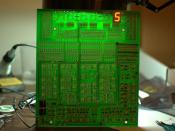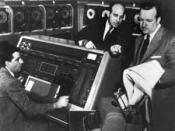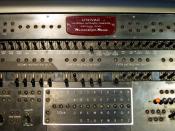The first generation of computers, beginning around the end of World War
2, and continuing until around the year 1957, included computers that used
vacuum tubes, drum memories, and programming in machine code.
Computers at that time where mammoth machines that did not have the
power our present day desktop microcomputers.
In 1950, the first real-time, interactive computer was completed by a
design team at MIT. The 'Whirlwind Computer,' as it was called, was a
revamped U.S. Navy project for developing an aircraft simulator. The
Whirlwind used a cathode ray tube and a light gun to provide interactively.
The Whirlwind was linked to a series of radars and could identify unfriendly
aircraft and direct interceptor fighters to their projected locations. It was to
be the prototype for a network of computers and radar sites (SAGE) acting
as an important element of U.S. air defense for a quarter-century after 1958.
In 1951, the first commercially-available computer was delivered to the
Bureau of the Census by the Eckert Mauchly Computer Corporation. The
UNIVAC (Universal Automatic Computer) was the first computer which was
not a one-of-a-kind laboratory instrument. The UNIVAC became a
household word in 1952 when it was used on a televised newscast to project
the winner of the Eisenhower-Stevenson presidential race with stunning
accuracy. That same year Maurice V. Wilkes (developer of EDSAC) laid the
foundation for the concepts of microprogramming, which was to become the
guide for computer design and construction.
In 1954, the first general-purpose computer to be completely
transistorized was built at Bell Laboratories. TRADIC (Transistorized
Airborne Digital Computer) held 800 transistors and bettered its
predecessors by functioning well aboard airplanes.
In 1956, the first system for storing files to be accessed randomly was
completed. The RAMAC (Random-Access Method for Accounting and
Control) 305 could...


